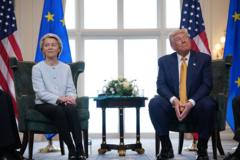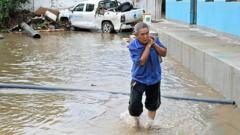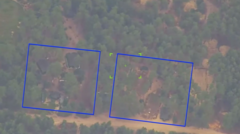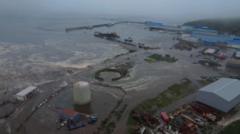In a significant shift, Japan is reinforcing its military presence in response to China's assertiveness in regional waters, while also addressing U.S. pressure regarding security commitments. The establishment of the Seventh Regiment of the Ground Self-Defense Force, equipped with mobile missile systems, is a visible component of this strategy. With military officials asserting that these enhancements serve as a deterrent not only against potential threats from China but also as a reassurance of Japan's commitment to its own defense amid U.S. engagement, Tokyo seeks to align its defense priorities with Washington’s expectations. Simultaneously, ongoing negotiations regarding trade tariffs reflect Japan's intention to bolster its security ties with the U.S. while pursuing significant economic transactions to mitigate potential tariff barriers.
Japan's Military Posture: A Response to Regional Tensions and U.S. Demands

Japan's Military Posture: A Response to Regional Tensions and U.S. Demands
As Japan strengthens its military capabilities, concerns over China's naval dominance and U.S. expectations shape national defense strategies.
Japan is making a strategic defense build-up aimed at countering China's maritime assertiveness and addressing U.S. security expectations. In the wake of heightened regional tensions, Japan's establishment of a new missile regiment in Okinawa is both a response to military threats and an overt signal to the United States regarding Japan's commitment to its own defense.
In the face of rising Chinese naval activity, Japan's Seventh Regiment has been publicly displaying its missile capabilities from a visible base on Okinawa. This show of force, while aimed at deterrence, also seeks to reassure the United States, especially President Trump, who has previously voiced concerns about Japan's reliance on U.S. military presence for security. The regiment's commander, Col. Yohei Ito, highlighted the dual intent of their enhanced military posture, stating that their readiness is meant to dissuade adversaries.
Currently, Japan is engaged in negotiations with the U.S. to alleviate trade tensions, as Tokyo seeks to assure Washington of its military capabilities in exchange for favorable trade terms. Japan's trade envoy has recently met with U.S. officials to discuss lifting tariffs, likely in return for commitments to substantial purchases of American goods, including energy and military technology. This demonstrates Japan’s approach of intertwining economic and security interests, showcasing a multifaceted strategy in the evolving geopolitical landscape of East Asia.
In the face of rising Chinese naval activity, Japan's Seventh Regiment has been publicly displaying its missile capabilities from a visible base on Okinawa. This show of force, while aimed at deterrence, also seeks to reassure the United States, especially President Trump, who has previously voiced concerns about Japan's reliance on U.S. military presence for security. The regiment's commander, Col. Yohei Ito, highlighted the dual intent of their enhanced military posture, stating that their readiness is meant to dissuade adversaries.
Currently, Japan is engaged in negotiations with the U.S. to alleviate trade tensions, as Tokyo seeks to assure Washington of its military capabilities in exchange for favorable trade terms. Japan's trade envoy has recently met with U.S. officials to discuss lifting tariffs, likely in return for commitments to substantial purchases of American goods, including energy and military technology. This demonstrates Japan’s approach of intertwining economic and security interests, showcasing a multifaceted strategy in the evolving geopolitical landscape of East Asia.





















